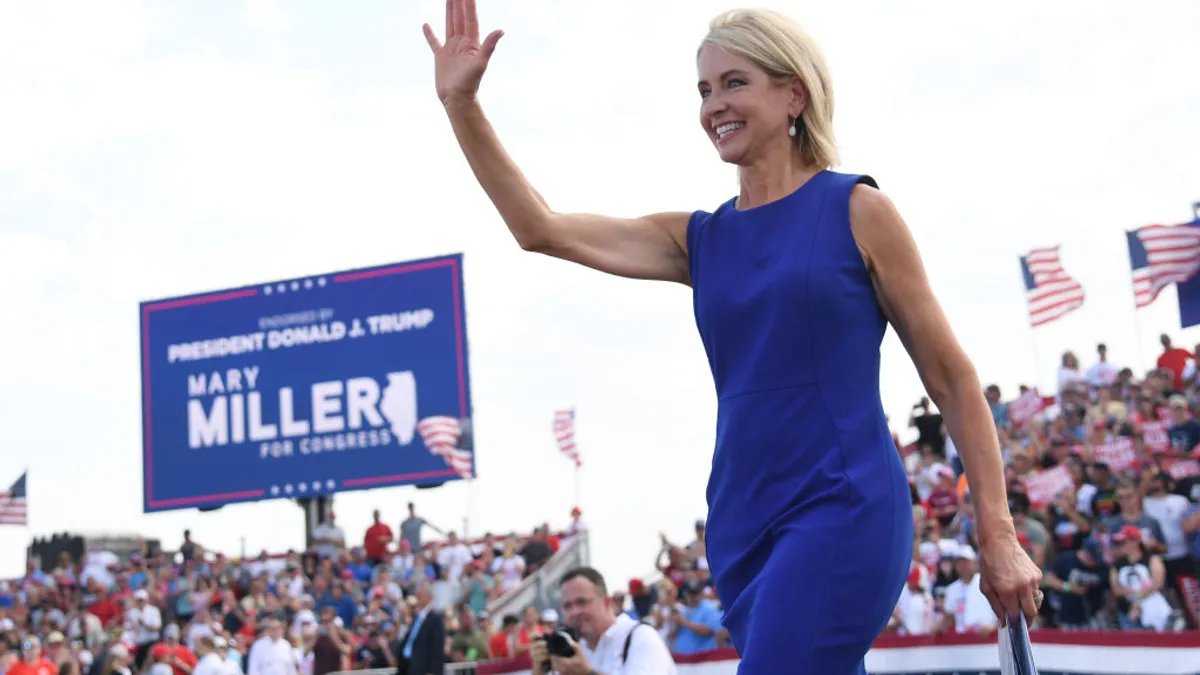Editor's note: Welcome to Resource Actions, our occasional, back-and-forth column covering everything from the bizarre to the day-to-day that, despite everything, impacts HR departments. Please feel free to send all tips, thoughts and broken rackets to [email protected] and [email protected].
Kathryn Moody: It's hard to imagine that your office could be the USTA Billie Jean King National Tennis Center, but for athletes at the U.S. Open last weekend, that was indeed the case. So during the women's final on Sept. 8, viewers — in a manner of speaking — witnessed an actual workplace conflict on national TV.
Ryan Golden: The final: American Serena Williams vs. Japan's Naomi Osaka. Didn't catch it? We've included the highlights from ESPN below. Pay special attention these time marks (if you're too rushed to watch the whole thing for context): 0:27, 2:33, 3:47, 5:00, 6:50. That last mark is especially critical.
"This has happened to me too many times, this is not fair," Williams told officials after receiving a game penalty for what the chair umpire deemed verbal abuse. "There's a lot of men out here that have said a lot of things and because they're men, that doesn't happen to them."
It's not hard to see what Williams is referring to. Look no further than incidents in the sport from male players like Andre Agassi, Roger Federer and Andy Murray, the third having once kicked a ball at an umpire's face without receiving a subsequent penalty. But what does consistency in awarding fouls in a sport reveal about the workplace?
Kathryn Moody: Workplaces have rules and so do sports, obviously. (Clearly I'm not an all-star athlete.) This is why we have umpires and HR professionals — to moderate and ensure a fair experience for everyone. But the response from athletes and the public alike points out a key aspect of workplace management that HR managers focused on inclusion must keep in mind: rules, both written and unwritten, seem like the ultimate arbiter of fairness … but they can be applied unfairly.
Ryan Golden: The term "double standard" gets thrown around a lot in discussions of inequality, but one could argue there are few clearer examples of it than the tennis scenarios mentioned above. Tennis legend Billie Jean King, who played in multiple highly-publicized matches against male players, termed the Williams incident exactly that.
For attorney Andrea Kramer, a partner at McDermott Will & Emery LLP, the U.S. Open story served as an illustration of how the uneven enforcement of rules at work can have an adverse outcome. "Written workplace rules are expected to be applied in a gender-neutral way. But, in practice, many written — as well as unwritten — rules allow for stereotypes and biases to negatively affect women," Kramer wrote in an email to HR Dive. "People who have the best intentions can still react to a situation because of their implicit (unconscious) bias in ways that allow them to disproportionately enforce written and unwritten rules."
Kathryn Moody: The double standard is more than just unfair. In some cases, it is downright illegal. Applying rules in a biased way can lead to an employer sweeping the wrongdoings of star employees under the rug "for the good of the company," for example — something that led to a slew of sexual harassment revelations in Silicon Valley at the beginning of 2017, before the #MeToo movement even existed.
Sometimes women are told to follow a certain regulation when men routinely get away with not doing so thanks to a separate set of unwritten rules that apply to one group and not the other. One Harley-Davidson dealership was sued by the U.S. Equal Employment Opportunity Commission (EEOC) for passing over a female employee for promotion nine times. The employer allegedly required the employee to participate in a mentorship program to be eligible for promotion but did not require the same participation from male employees.
Other differences in experience, particularly those documented by people of color, can't be discounted. One PayScale study showed that women of color are 19% less likely to receive a raise than white men, and men of color are 25% less likely to receive a raise, even after controlling for other factors. Bias is a reality; the issue is recognizing it.
Ryan Golden: So what can employers do to stop bias? For starters, not much. Science shows that unconscious biases are something we inherit naturally. "The biggest thing that employers get wrong when they attempt to confront workplace bias is by assuming they can eliminate bias by simply sponsoring a training course about eliminating bias," Kramer said. "Saying 'don't be biased' will not accomplish anything."
Ensuring a more even enforcement of the rules and closing gaps requires self-reflection, particularly for organizational leadership. Kramer recommends that leadership and management have a role in attacking those gaps as vigorously as possible. "Employers should have a clear sense that their rules are applied consistently and they should assure that those rules are applied in a way that prevents harsher penalties for women and people of color," she said.
Kathryn Moody: In other words, employers have to understand that while bias can't be erased, it can be ameliorated by improving diversity and inclusion, educating employees where possible, creating awareness of bias and ensuring that rules are enforced consistently.























